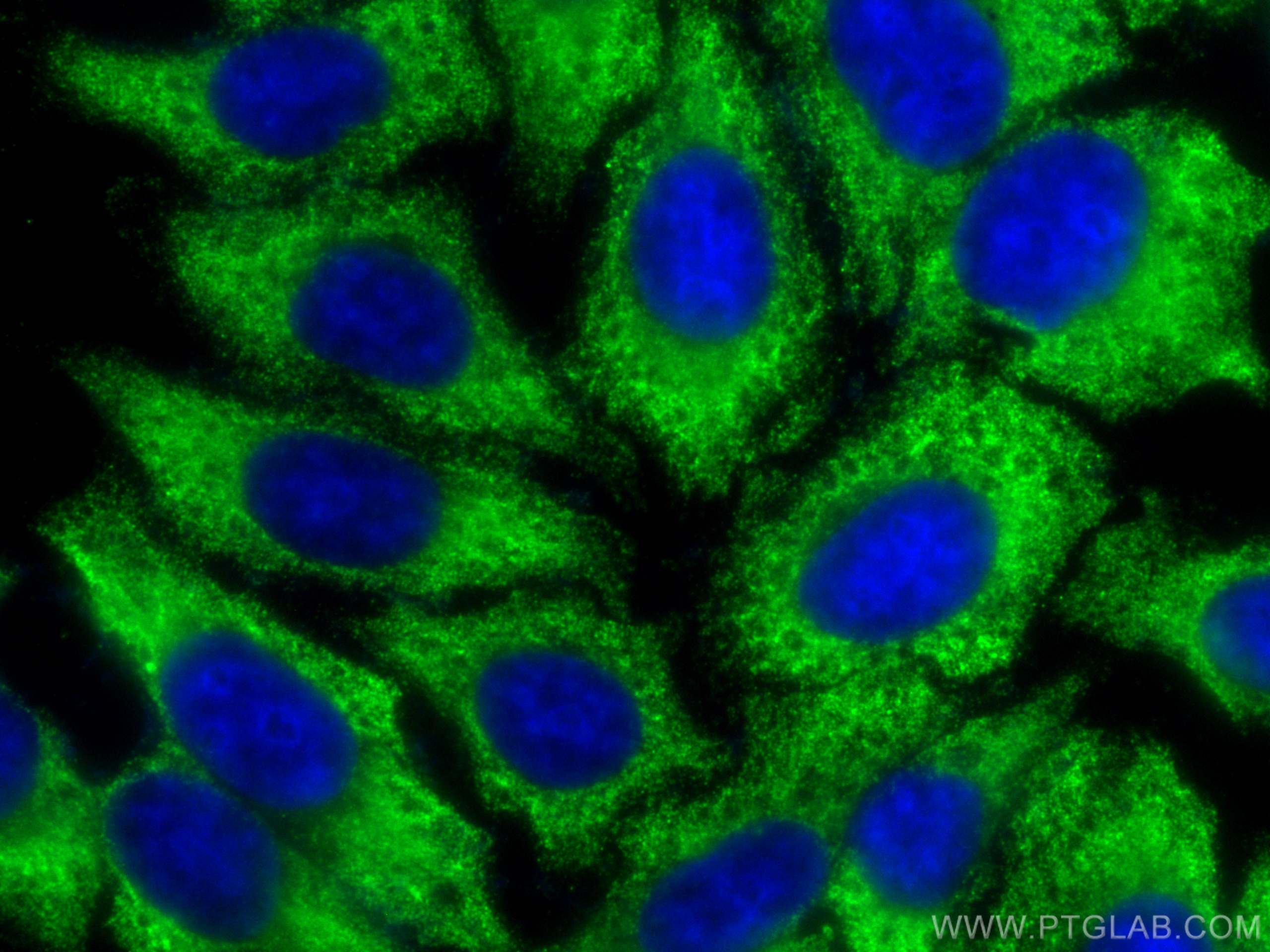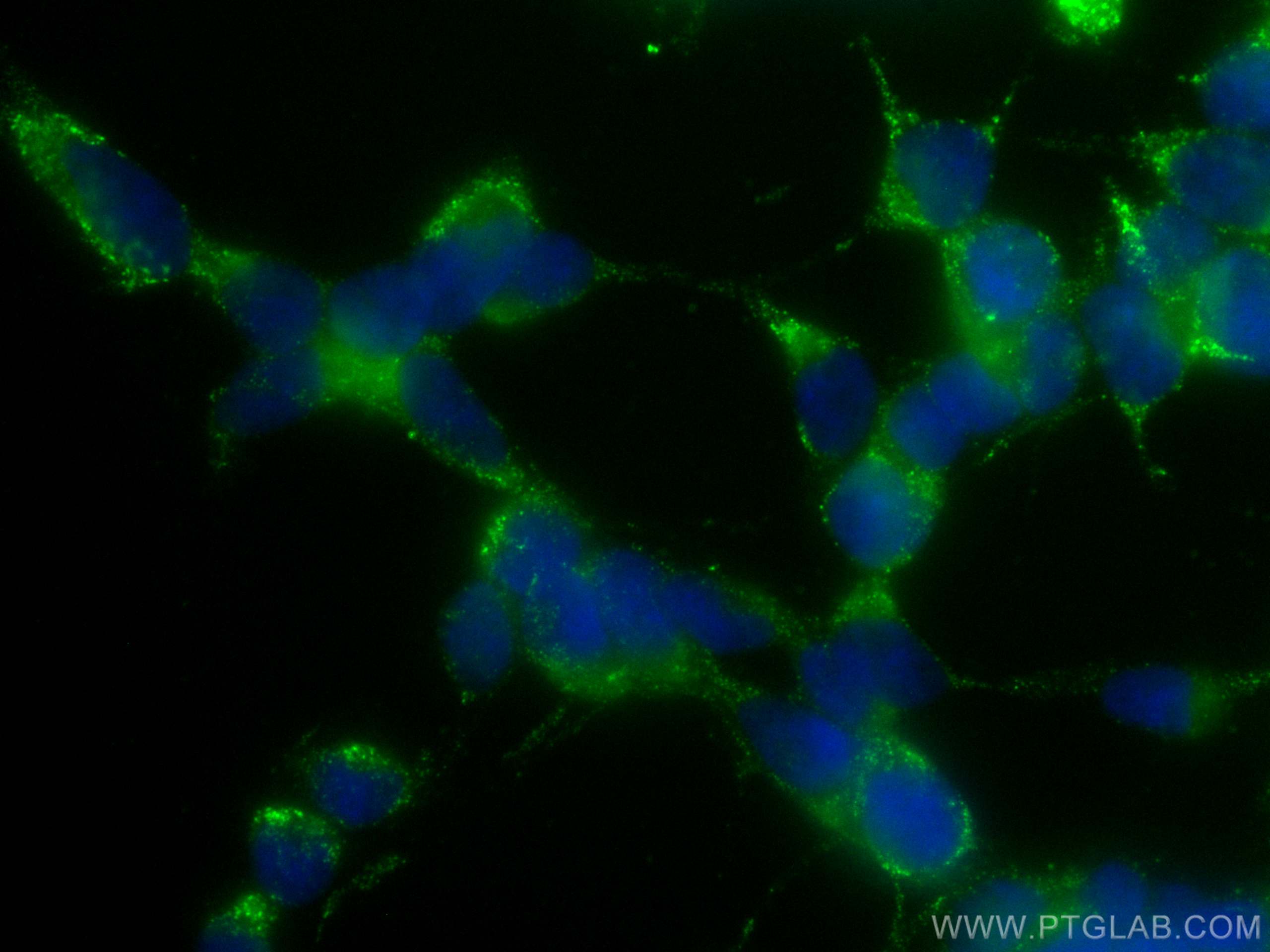Tested Applications
| Positive IF/ICC detected in | HepG2 cells, SH-SY5Y cells |
Recommended dilution
| Application | Dilution |
|---|---|
| Immunofluorescence (IF)/ICC | IF/ICC : 1:50-1:500 |
| It is recommended that this reagent should be titrated in each testing system to obtain optimal results. | |
| Sample-dependent, Check data in validation data gallery. | |
Product Information
CL488-66098 targets S100A6 in IF/ICC applications and shows reactivity with human samples.
| Tested Reactivity | human |
| Host / Isotype | Mouse / IgG1 |
| Class | Monoclonal |
| Type | Antibody |
| Immunogen |
CatNo: Ag17606 Product name: Recombinant human S100A6 protein Source: e coli.-derived, PET28a Tag: 6*His Domain: 1-90 aa of BC001431 Sequence: MACPLDQAIGLLVAIFHKYSGREGDKHTLSKKELKELIQKELTIGSKLQDAEIARLMEDLDRNKDQEVNFQEYVTFLGALALIYNEALKG Predict reactive species |
| Full Name | S100 calcium binding protein A6 |
| Calculated Molecular Weight | 10 kDa |
| Observed Molecular Weight | 10 kDa |
| GenBank Accession Number | BC001431 |
| Gene Symbol | S100A6 |
| Gene ID (NCBI) | 6277 |
| RRID | AB_3084204 |
| Conjugate | CoraLite® Plus 488 Fluorescent Dye |
| Excitation/Emission Maxima Wavelengths | 493 nm / 522 nm |
| Form | Liquid |
| Purification Method | Protein G purification |
| UNIPROT ID | P06703 |
| Storage Buffer | PBS with 50% glycerol, 0.05% Proclin300, 0.5% BSA, pH 7.3. |
| Storage Conditions | Store at -20°C. Avoid exposure to light. Stable for one year after shipment. Aliquoting is unnecessary for -20oC storage. |
Background Information
S100A6 is also named as calcyclin, prolactin receptor-associated protein (PRA), growth factor-inducible protein 2A9 ir MLN4. It belongs to S100 family of low molecular weight, acidic, calcium-binding proteins which contain two EF-hand calcium binding sites. S100A6 may function as a calcium sensor to activate several processes in the calcium signal transduction pathway of cell growth, proliferation, secretion and exocytosis.
Protocols
| Product Specific Protocols | |
|---|---|
| IF protocol for CL Plus 488 S100A6 antibody CL488-66098 | Download protocol |
| Standard Protocols | |
|---|---|
| Click here to view our Standard Protocols |






